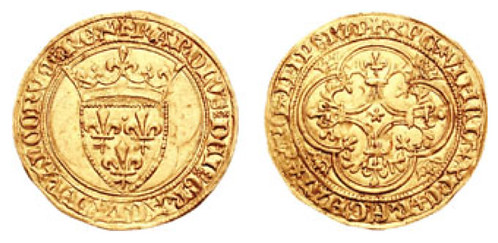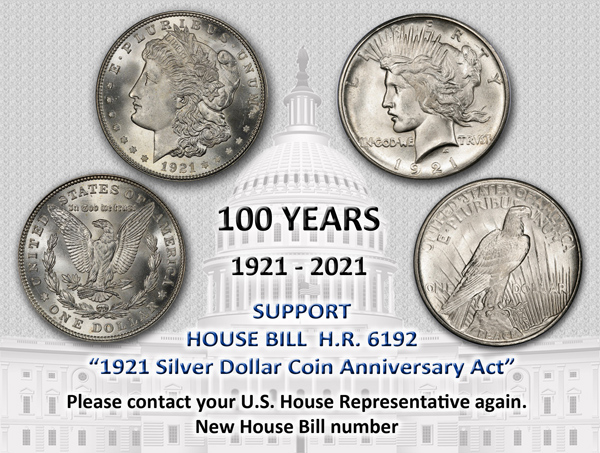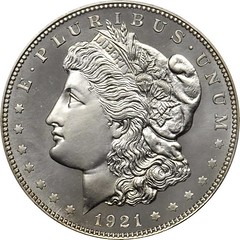
PREV ARTICLE
NEXT ARTICLE
FULL ISSUE
PREV FULL ISSUE
LOOSE CHANGE: APRIL 5, 2020Here are some additional items in the media this week that may be of interest. -Editor The Phillips Collection and the Healing Power of Art
Also from ARTnews comes this non-numismatic piece about a current topic - a great museum founded in response to a pandemic death. -Editor The world is currently facing unprecedented challenges, and the arts can provide a measure of relief. Now that we are unable to interface with our communities physically, we in the field need to be thoughtful about how we move the wellness aspects of the museum experience online. Recently there has been a movement towards thinking of museums as places of solace and meditation, and this is something we need to continue to focus on beyond the Covid-19 crisis. But it is often assumed that this is something new. The institution I lead, the Phillips Collection in Washington D.C., is proof that art has been associated with wellness long before the current focus on this connection. The Phillips Collection, however, from its very inception focused on the healing power of art. Nearly a century ago, in 1921, Duncan Phillips established the Phillips Memorial Gallery, a place of solace and a memorial to his father who died in 1917 and brother, James Laughlin Phillips, who succumbed to the Spanish influenza epidemic in 1918. The museum was founded on the principles of the deep connection between art and wellness, with Duncan Phillips determined to create a collection of art for the community. "There came a time when sorrow all but overwhelmed me," Phillips wrote in his 1926 book A Collection in the Making: A Survey of the Problems Involved in Collecting Pictures Together with Brief Estimates of the Painters in the Phillips Memorial Gallery. "Then I turned to my love of painting for the will to live?…?So in 1918 I incorporated the Phillips Memorial Gallery, first to occupy my mind with a large, constructive social purpose and then to create a Memorial worthy of the virile spirits of my lost leaders—my father?…?and my Brother?…. I saw a chance to create a beneficent force in the community where I live—a joy-giving, life-enhancing influence, assisting people to see beautifully as true artists see." To read the complete article, see:
Coins in Shakespeare
Mike Markowitz published a nice article for CoinWeek on the coins of Shakespeare. Here's an excerpt, but be sure to see the complete article online. -Editor William Shakespeare (1564–1616) was born in the 31st year of the reign of Elizabeth I (ruled 1533–1603) and died in the 13th year of the reign of James I (ruled 1603-25). England's circulating coinage during his lifetime included 11 different denominations in silver and nine in gold (there was no copper), along with many French, Italian, Spanish, and Dutch types mentioned in the plays.  "Indeed, the French may lay twenty French crowns to one they will beat us … But it is no English treason to cut French crowns, and tomorrow the king himself will be a clipper." —Henry V, Act IV, scene 1 "French crown" was the English name for a gold coin, the ecu à la couronne ("shield with a crown") issued from 1385 to 1640. The weight and value varied over time. The obverse bore France's royal coat of arms, a shield with three lilies (fleurs-de-lis) topped by a crown. The reverse bore an elaborate "floreate" cross, surrounded by a Latin inscription: "Christ conquers, Christ reigns, Christ rules." Clipping the edges of gold coins in order to sell the clippings was an illegal, but common, medieval practice. Clipping coins bearing the king's image was punishable as treason. To read the complete article, see:
Gold Coins of Charles I
Here's a blog article from Baldwin's on coins of Charles I, the second Stuart King. -Editor  Charles I was King of England, King of Scotland, and King of Ireland from 27 March 1625 until his execution in 1649. He was born into the House of Stuart as the second son of King James VI of Scotland. After his father inherited the English throne in 1603 as James I, he moved to England. After the death of his older brother Henry Frederick in 1612, he became heir apparent to the three kingdoms. Charles I ascended to the throne in 1625, the same year he married the Bourbon princess Henrietta Maria of France, who was a Roman Catholic. The gold Unite denomination was first produced during the reign of King James I and named after the legends on the coin that indicated the king's intention of uniting the two kingdoms of England and Scotland. Numerous issues of gold unites, valued at twenty shillings, were produced at the Tower Mint throughout the reign of Charles I, both when the mint was under the king's control and later when it was under the control of the Parliament. To read the complete article, see:
More on the 1921 Silver Dollar Coin Anniversary Act
Lou Golino published a new article for Coin Update discussing how collectors are reacting to the new 2021 silver dollar legislation and includes some key clarifications about what is being proposed. Here's an excerpt, but be sure to see the complete article online. -Editor
The new proposal seeks the issuance of Morgan and Peace silver dollars to mark the centennial of the transition in 1921 from the Morgan dollar series to the Peace dollar series, which paralleled the American transition from westward expansion and industrial revolution in the 19th century to its coming of age as an international power in World War I. Instead of being commemoratives, the new silver dollars would be struck in 2021 as legal tender coins. The new plan is the brainchild of Pennsylvania Association of Numismatists President Thomas J. Uram, who is also chairman of the Citizens Coinage Advisory Committee, and Michael Moran, another current CCAC member and also a noted numismatic author and researcher. To read the complete article, see:
To read the earlier E-Sylum article, see:
 Wayne Homren, Editor The Numismatic Bibliomania Society is a non-profit organization promoting numismatic literature. See our web site at coinbooks.org. To submit items for publication in The E-Sylum, write to the Editor at this address: whomren@gmail.com To subscribe go to: https://my.binhost.com/lists/listinfo/esylum All Rights Reserved. NBS Home Page Contact the NBS webmaster 
|
